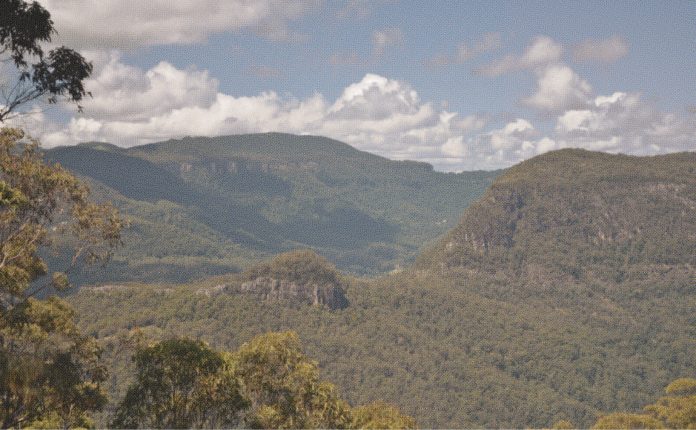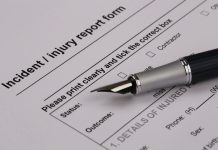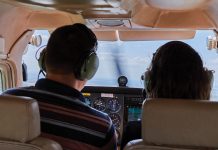When faced with ambiguous information, this pilot swallowed pride and made the safe decision.
How much fuel do we have? I always like to know the answer to this question at any time during a flight and, with all the latest avionics onboard, I thought I was on top of it.
However, this story is about a recent flight where I almost found myself in a situation that could have become an incredibly embarrassing news story.
One of the most important tasks in aviation flight planning is ensuring you have enough fuel on board to complete the flight. Fuel exhaustion is a regular cause of aviation incidents and accidents around the world. The calculation to ascertain how much fuel is remaining in the tank is: the amount of fuel at engine start, minus how much fuel has been used up to this point.
I am a great fan of modern digital technology in aircraft, however, there are traps to be mindful of, especially when you ignore traditional safeguards that were developed to deal with unreliable technology. With experience, you come to rely on numbers rather than needles.
The redeeming feature of the original float-type fuel quantity gauges is that they don’t even pretend to be accurate. Therefore, a wise pilot will fill their tanks to the top, or to a calibrated level, then monitor fuel use according to power settings and time. Since the 1970s, many aircraft have been fitted with analogue fuel-flow gauges, which are based on fuel pressure or actual flow. More recently, digital fuel-flow meters have become common and automatically calculate ‘fuel burnt’, ‘fuel remaining’ and ‘potential endurance’.
But of course, there’s a catch. As with any kind of computer, rubbish in leads to rubbish out.
Here is a common scenario. Once a tank is filled, the fuel computer is set to ‘full fuel’. At the end of the first flight, the computer dutifully indicates how much fuel is remaining in the tanks. For the next flight, if full fuel is not required, additional fuel is added regardless to top up the tank, and this quantity is mentally added to the amount of fuel remaining in the tank. The amount is then manually entered into the fuel computer, and this process is repeated for subsequent flights. As you can imagine, the risk of miscalculation or finger errors when entering in the data increases.
A recent experience brought this fallacy to my attention. Accidents require a sequence of events to line up just at the right time, and on this occasion I was able to watch them unfold first-hand.
The first ‘event’ occurred when I was refuelling at Bankstown. I asked for full fuel but, despite usually supervising the upload process, in this instance I was preoccupied. My Mooney M20K has an anti-syphon flap on the inboard tanks and fuelling requires some expertise in relation to the speed of filling and the level at which the tank needs to be filled. The fuel slowly flows out to the long-range tanks and, thus, the inboard tanks only appear ‘full’ for a short amount of time.
When dipping the tanks before departure, I remember thinking they were not quite up to the level I was expecting, but some time had elapsed between filling and checking, so I proceeded regardless. I set the fuel computer to the full 286 litres and departed back to Canberra, arriving home with an indicated 238 litres remaining.
A week later we arrived at the airfield for a trip up to Archerfield aerodrome in Brisbane; a flight time of 3.2 hours. I calculated the required amount of fuel and was happy with the existing margin of 50 litres on top of reserves. I dipped the tanks and noticed the fuel level was a bit lower than I expected. The fuel computer still read 238 litres, so with good weather forecast, we departed north.
With a heightened level of vigilance, I was checking the fuel flow and other legacy gauges the entire way. Abeam Coffs Harbour, I realised the gauges were lower than they should be, but of course, you can’t trust them. When the new avionics were installed, I remembered being told that I should only consider the old gauges accurate when fuel was low. Well, it was low now!
Between Grafton and Brisbane lie the McPherson Ranges and Lamington National Park. The lowest safe altitude on our track was 6,500 feet. I’ve bushwalked in this area several times. Recalling hiking through the dense rainforest, I found myself thinking about techniques for tree-top landings, how isolated it was up there, how it would be wet and cold at night and, perhaps most importantly, how I would ever explain my stupidity to my friends and family – if I survived.
The co-pilot quickly informed me that such an adventure was not on her bucket list. So, with the digital gauge still reading 170 litres, I decided to ignore the modern technology and rely on the legacy gauges which, when added together, totalled 80 litres of fuel remaining. Time for a command decision. If we had fewer than 70 litres when abeam Grafton, we would need to divert to Lismore to refuel.
We had exactly 70 litres of fuel remaining at this point. It was just enough to get us to Archerfield in a ‘minimum fuel’ situation, so we decided to alter heading for Lismore. As we commenced our descent, the right-hand low-fuel light made its presence known. Lismore had been my home base for some years, so I felt very comfortable landing there. After landing, I did a tank dip: right-hand tank 10 litres, left-hand 50. We had 90 litres less than the digital gauges were reading. This is the difference between full and FULL tanks.
After a short break, we headed off and while crossing the ranges once again, we were able to enjoy the spectacular view of the rainforest below – appreciating it from up in the air – as planned!
Lessons learnt
- Always supervise when your fuel tanks are being filled, or better yet, do it yourself!
- Confirm the correct type of fuel is being loaded.
- A pre-flight fuel dip is always worthwhile (if practicable).
- Double check the total fuel on board reading on the fuel display. Can you rely on it?
- Crosscheck all fuel information as the flight progresses. If things don’t correlate, take the conservative option and divert.
Flight planning is one of the special topics on our Pilot safety hub.
Have you had a close call?
Often the experience is something you’ll never forget and you’ve learnt a valuable lesson. Why not share your close call so others can learn from it too?
Articles should be between 500 and 1,000 words. Email fsa@casa.gov.au with your story or a request for a call back. If we publish your story, we’ll give you $500 for an article you’re written.
Disclaimer
Close calls are contributed by readers like you. They are someone’s account of a real-life experience. We publish close calls so others can learn positive lessons from their stories, and to stimulate discussion. We do our best to verify the information but cannot guarantee it is free of mistakes or errors.






Great read. I am not a, user of the fancy fuel flow stuff but EVERY TIME I land I check tacho units accurately and know my fuel consumption accurately and am able to nominate the EXACT fuel I have used. It is so easy.